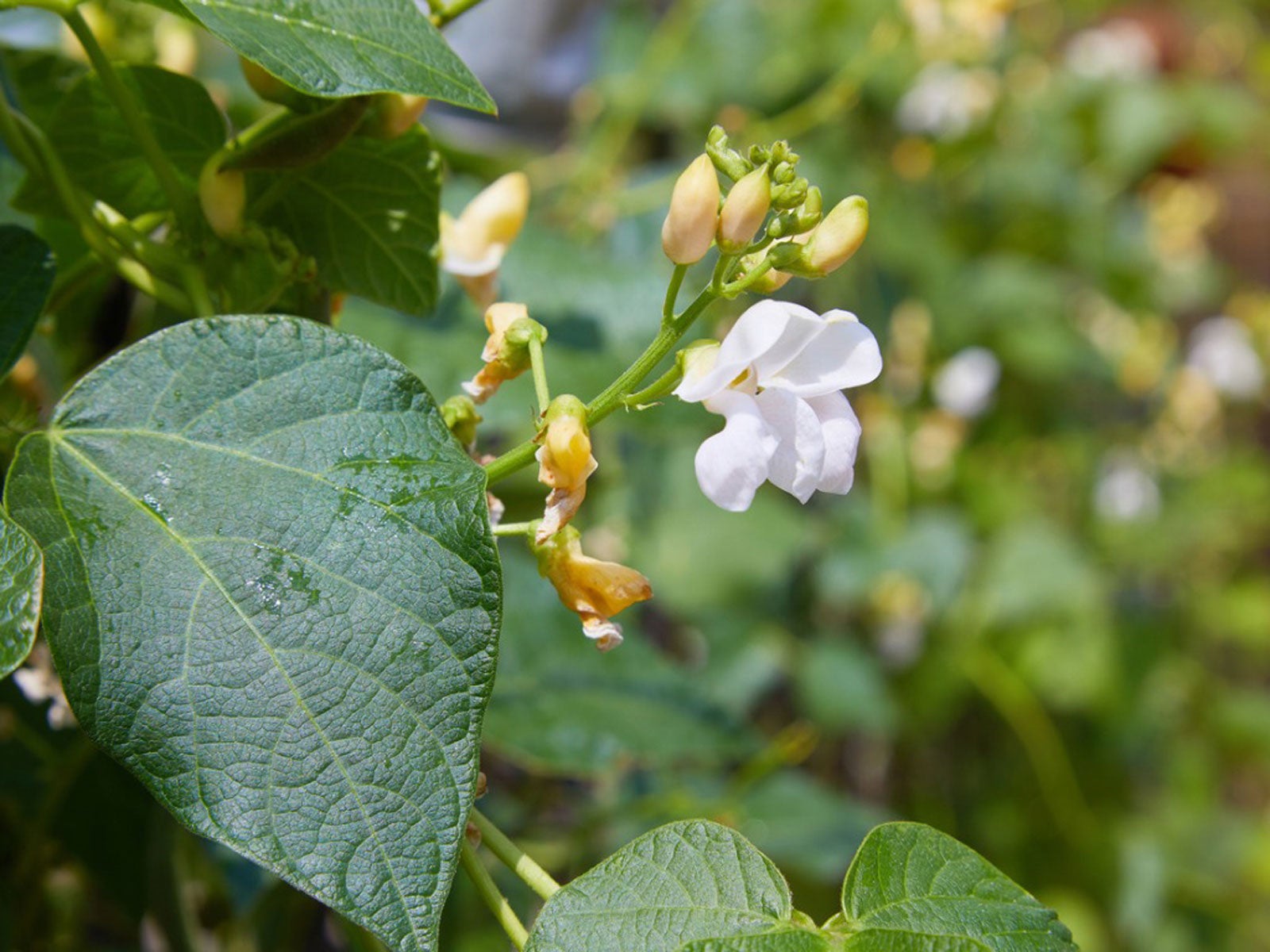No Bean Flowers: How To Get A Bean Plant To Bloom


Beans are more than a musical fruit in the garden; they're an excellent plant for first time gardeners to get hands -on experience growing vegetables. Usually easy to keep, beans can be really frustrating when no bean flowers are produced during their short growing season. If your beans don't bloom, don't panic, but look out for these common causes of bean bud failure.
Why Beans Fail to Bloom
Beans, like other fruiting plants, require exacting conditions to set lots of blooms. Buds fail for a number of reasons, but over fertilization is a common problem among new growers. Other common reasons for beans plants not flowering are easily correctable environmental conditions. If you catch these early in the season, you may still have a decent crop. Nitrogen fertilizer stimulates plants to grow lots of vegetation at the expense of flowers. Beans are legumes, like peas, and can fix some of their own nitrogen from the air. Providing bean plants too much nitrogen before they've set flowers may prevent flower production entirely. Always perform a soil test before fertilizing your beans. Environmental conditions must be right for green beans, or buds will abort spontaneously. Wait to plant green beans until the soil temperature is between 60 and 75 F. (16-24 C.) Choose a sunny location and water your plants well. Proper care is often all it takes to stimulate bean flowers. Age is a factor when no bean flowers is the problem. Unlike other plants that may set blooms continuously through the early part of the growing season, beans usually need to reach maturity before they will bloom. If your plants are still young, they may simply need more time. Most beans only need about four weeks to grow fruit; if you're more than a month away from your seed packet's stated days to harvest, be patient.
How to Get a Bean Plant to Bloom
If you're certain that your plants are old enough to bloom, check the rest of the environment before panicking. Is your plant getting enough water and sun? Stick a probe thermometer into the soil to see what the temperature is around your bean's roots; if it's not yet warm enough for flower production, the addition of a cover made from PVC and plastic can warm the soil adequately for blooms to start appearing. Your soil test may also hold the answers. If your soil is rich in nitrogen, back off the fertilizer and water your plant well to help leach the excess nitrogen from the soil. Adding phosphorus and potassium to poor soils can sometimes stimulate blooms, but as with all things in life, do so in moderation. Beans thrive on neglect, so too much attention may result in lots of leaves but no beans.
Gardening tips, videos, info and more delivered right to your inbox!
Sign up for the Gardening Know How newsletter today and receive a free copy of our e-book "How to Grow Delicious Tomatoes".

Kristi Waterworth was a regular contributor to Gardening Know How for many years, answering countless queries on plant pests and diseases.
-
 How To Make A Bouquet Garni Or Herb Bundle For Cooking
How To Make A Bouquet Garni Or Herb Bundle For CookingIf you’re a great cook, you may have made an herb bundle before. If this is a new idea, learn how to add sparkle and interest to your dish with a bouquet garni.
By Amy Grant
-
 ‘Coral Charm’ Peony Care For Sublime Semi-Double Peonies With Lush Salmon Pink Flowers
‘Coral Charm’ Peony Care For Sublime Semi-Double Peonies With Lush Salmon Pink FlowersPeonies are known for their soft baby pink or magenta tones, but if plushy coral blooms are your thing, here’s our guide to the ultimate ‘Coral Charm’ peony care
By Tonya Barnett